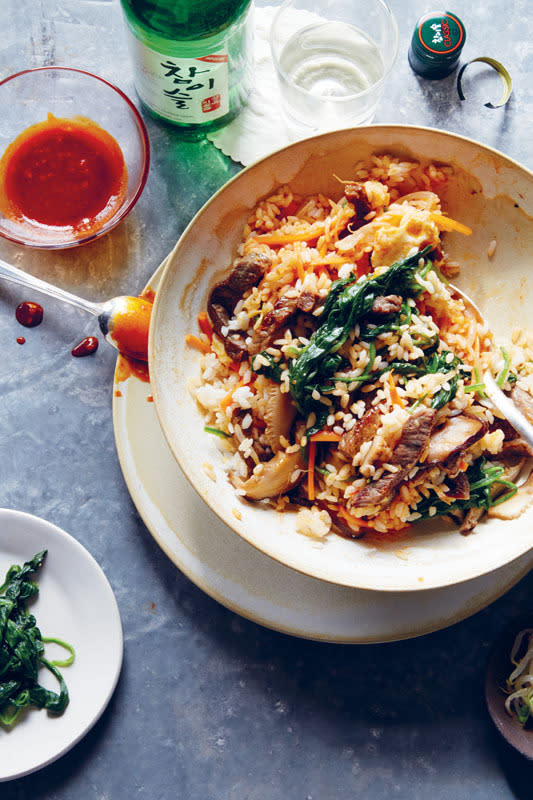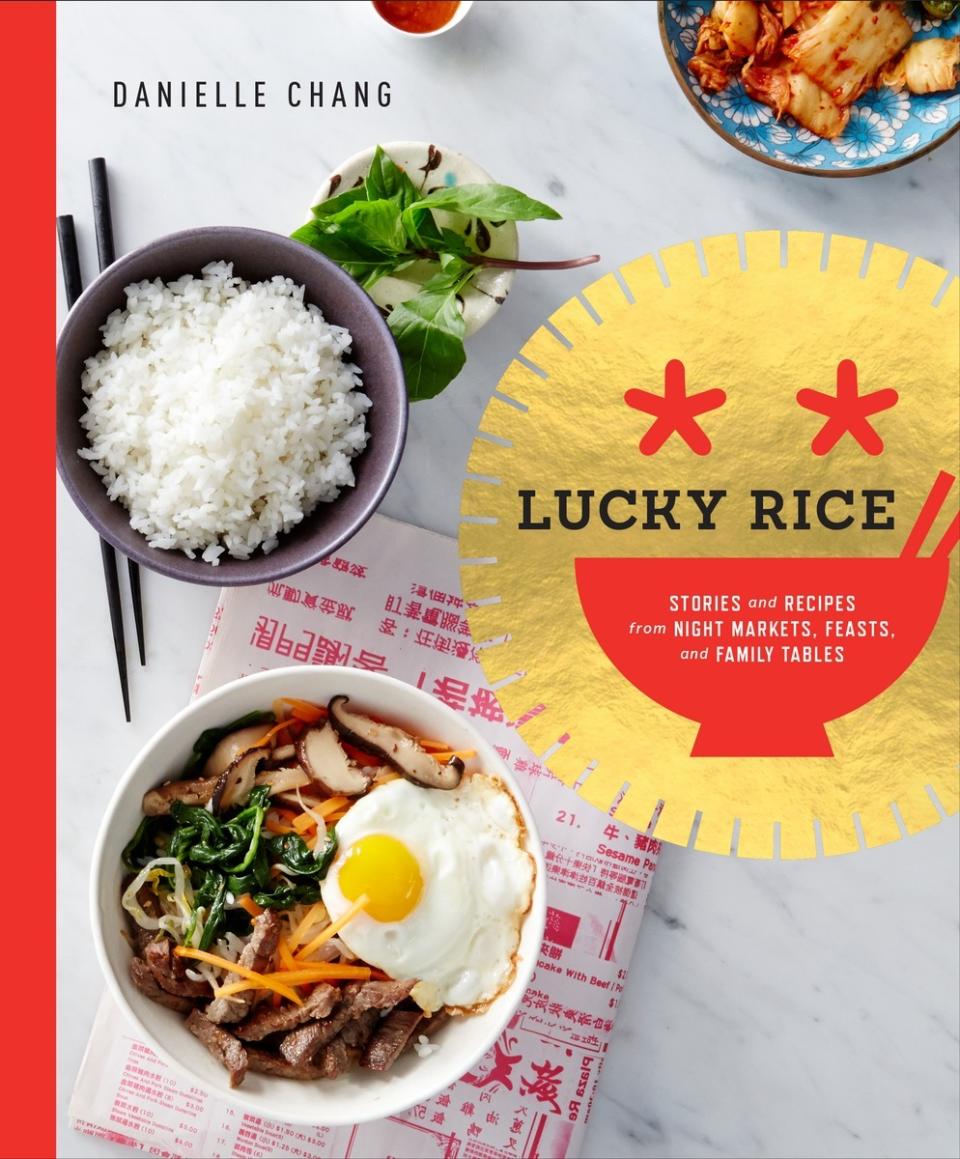Add This Korean Bibimbap Recipe to Your Asian Food Repertoire
Every week, Yahoo Food spotlights a cookbook that stands out from all the rest. The week’s cookbook is Lucky Rice: Stories and Recipes from Night Markets, Feasts, and Family Tables by Danielle Chang (Clarkson Potter), founder of the LUCKYRICE festival and host and creator of Lucky Chow on PBS. Read more about Yahoo Food’s Cookbook of the Week here.

Photograph by Christina Holmes
Bibimbap
Serves 4
The Koreans have a tradition of stirring together all the food offerings made at an ancestral rite and then eating the mixture. This is likely the basis of bibimbap (or “mixed rice”), where an artful composition of meats and vegetables on steamed rice is blended with a gochujang sauce. This kaleidoscope of ingredients is also rich in symbolism: black seaweed and shiitake mushrooms represent the north and the kidneys; reddish ingredients including carrots stand for the south and the heart; green cucumbers and spinach call out to the east and the liver; and white rice and bean sprouts evoke the west and the lungs. Lastly, the yellow egg yolks represent the center and the stomach.
For the sauce:
¼ cup gochujang chili paste
1 tablespoon Asian sesame oil
1 tablespoon light brown sugar
1 teaspoon rice vinegar
1 small garlic clove, minced
For the meat:
2 garlic cloves, minced
1 tablespoon soy sauce
1 tablespoon Asian sesame oil
1 teaspoon light brown sugar
6 ounces beef round steak, cut into thin strips
For the rice:
1 tablespoon vegetable oil
6 cups cooked rice
For the toppings:
2 to 3 tablespoons vegetable oil
1 (10-ounce) bag fresh spinach leaves, washed, large stems discarded
Sea salt, to taste
6 fresh shiitake mushrooms, thinly sliced
½ cup nori seaweed, cut into about 1-inch-wide strips
1 tablespoon soy sauce
1½ cups mung bean sprouts
4 large eggs
1 medium Persian cucumber, unpeeled and cut in half lengthwise, then into thin strips
1 large carrot, shredded
Make the sauce: Mix the gochujang, sesame oil, brown sugar, vinegar, garlic, and 1 tablespoon of water together in a small bowl. Set aside.
Marinate the meat: In a medium bowl, mix together the garlic, soy sauce, sesame oil, and brown sugar. Add the beef strips and let the beef marinate for 10 to 15 minutes.
Prepare the rice: Heat the vegetable oil in a cast-iron skillet over medium heat, swirling to coat the bottom of the skillet. Add the rice and pat it into an even layer. Reduce the heat to medium-low and let the rice cook, without stirring, for 10 to 15 minutes, until it has a crispy golden crust on the bottom.
Prepare the toppings: While the rice is cooking, heat 1 tablespoon of the vegetable oil in a wok or skillet over medium heat, and add the spinach. Sprinkle it lightly with sea salt and cook, stirring frequently, for 3 to 4 minutes, until softened and tender. Transfer the spinach to a bowl and set aside.
Add ½ tablespoon of the vegetable oil to the same pan, and cook the shiitake mushrooms over medium heat for 2 to 3 minutes, until they have softened and the edges are lightly browned. Add the soy sauce and cook until any visible liquid has evaporated and the mushrooms are lightly glazed. Set them aside in a small bowl.
Add another ½ tablespoon vegetable oil to the pan, add the bean sprouts, and sprinkle them lightly with sea salt. Cook for 1 minute, to just heat through and soften slightly. Set aside.
Heat a little more vegetable oil in the same pan, and fry the 4 eggs, sunny side up or over easy as desired. Divide the rice among 4 large bowls and set the fried eggs on top of the rice. Remove the beef from the marinade. Working quickly, add a bit more oil to the pan and cook the beef over high heat, tossing it until it is cooked through and lightly browned, 3 to 4 minutes. Divide the beef among the serving bowls, placing it next to the egg, and then arrange the spinach, cucumber, mushrooms, seaweed, sprouts, and shredded carrots, in separate heaps, around the beef and egg.
Serve with the gochujang sauce on the side, so diners can stir the ingredients together with as much sauce as desired.
Reprinted with permission from Lucky Rice: Stories and Recipes from Night Markets, Feasts, and Family Tables by Danielle Chang (Clarkson Potter).

More Asian recipes to make at home:
Quick Stir-Fry with Black Rice

